Table of contents
Who is Ganesha?
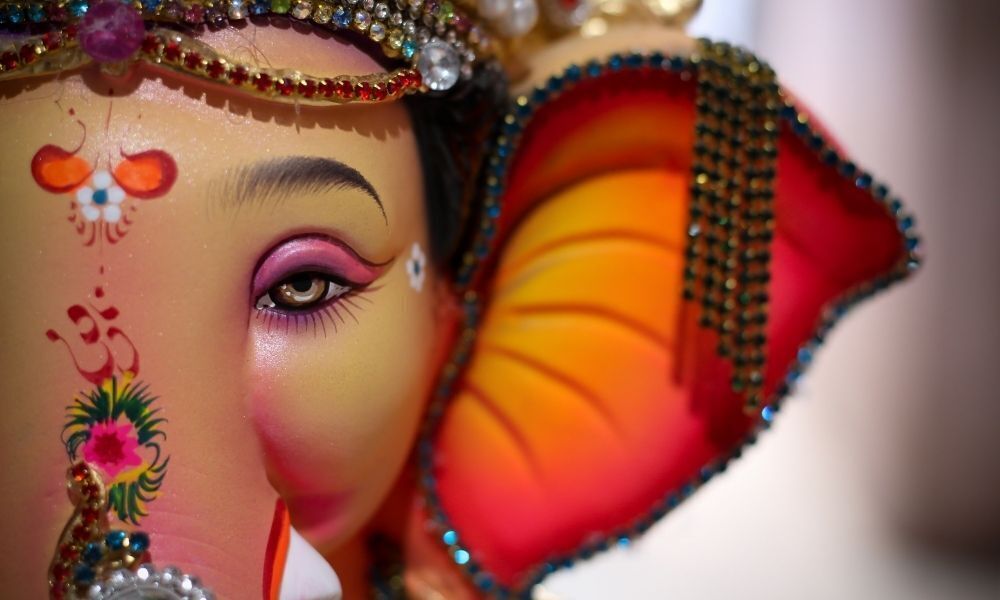
The god Ganesha is known as the divine symbol of wisdom and fortune and is a figure present in the Vedic culture, besides being extremely important and widely used in Hindu religion. He is characterized by a person with the head of an elephant and 4 arms, sitting. In addition, he is popularly known as the Lord of Obstacles.
This god has an admirable logical conscience, but the symbolism of being the "Destroyer of Obstacles" makes all the devotion around him to this belief. By the strength of his symbolism, this deity is also worshipped in Thailand, Nepal, Sri Lanka and several other countries. He goes beyond borders with his strength and recognition. Know more about him below.
The Ganesha story
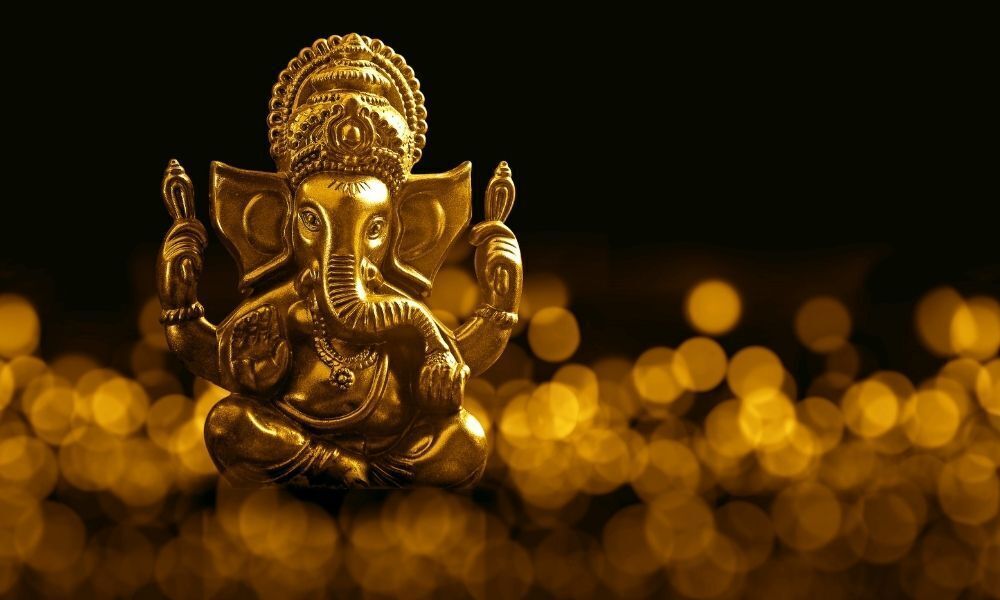
Like all deities that have great recognition, there are various stories and explanations about the god Ganesha having the head of an elephant. Many writings say that he was born with such a head, others that he acquired it over time.
The point is that Ganesha is the son of Parvati and Shiva, who are two very powerful Hindu gods. Being the first son of Shiva, the supreme, ultimate and regenerating god and Parvati, the mother goddess, of fertility and love. For this reason, he is an important symbol of intelligence and considered the one who opens the paths, brings fortune and guides everyone for the best.
Beheaded by Shiva
One of the best known stories about the god Ganesha is that the goddess Parvati, who is the Hindu goddess of love and fertility, created him from clay so that she could have protection and because she felt very alone in her life.
One fine day, while Parvati was taking a bath, she asked her son to watch the door and not let anyone in. Just that day, Shiva arrived early and fought with the god because he was at the door. In a fit of rage, Shiva cut off Ganesha's head and later, to redeem himself, replaced the god's head with that of an elephant.
Born of Shiva's laughter
The story that Ganesha's head is decapitated by Shiva is not the only one that exists. The second best known story is that the god was created directly from Shiva's laughter, but, Shiva found him too seductive and for that reason, gave him the head of an elephant and a huge belly.
Regardless of whatever reason Shiva had for turning his son's head into an elephant head and his huge belly, these two features ended up becoming a very important symbol for history and the real meaning of this god, because his elephant head is seen as the symbol of wisdom and knowledge and his big belly represents generosity and acceptance.
Devotion to Ganesha
Ganesha is considered the god who removes all obstacles from the paths, not only material, but also spiritual. Many scholars even say that he is the god of obstacle, because he has the ability to eliminate everything that no longer serves in the life of those who are devoted to him, but also puts stones in the path of those who need to be tested.
This god has many roles for his devotees, for example, to alleviate all problems, to bring good to those in need and of course, to bring teachings to those who need to learn from their own mistakes and challenges, because for Ganesha the obstacles are important in the formation of character, and it is exactly with this thought that he acts.
Beyond India
It is not difficult to find Ganesha in homes that have other religions and cultures other than Vedic and Hindu. This god and his symbolism of fortune and getting rid of obstacles in the way, grew beyond India, his birthplace.
The god has many worshippers and festivals for his symbolism. Not only because of his eye-catching and memorable appearance, but because his meaning is very broad, fitting all kinds of faiths and beliefs, regardless of the place.
The image of Ganesha
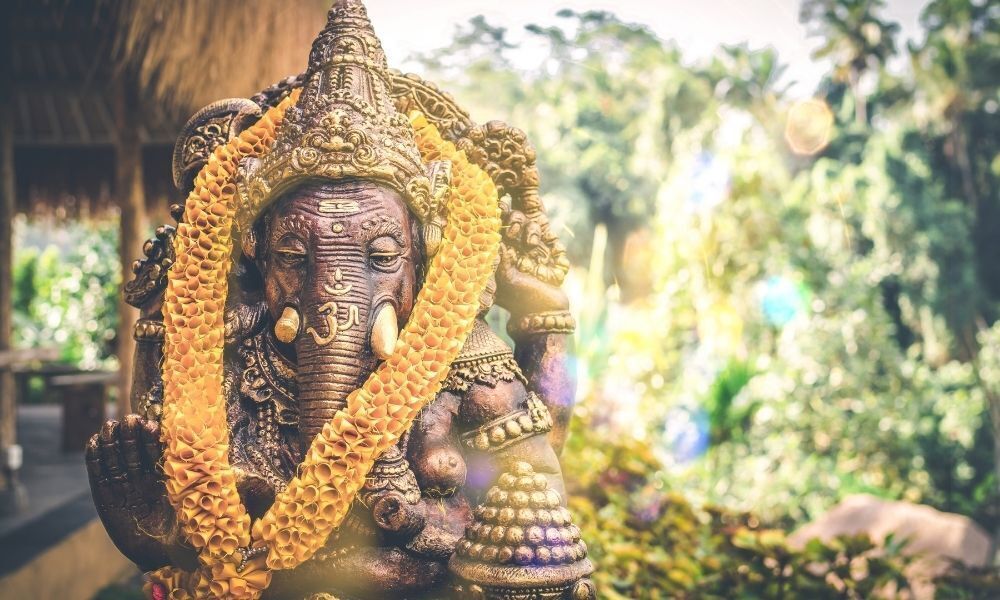
All the images of all the gods have a different meaning. This is exactly what makes them with distinct beliefs, as well as making them even more special and important to people of faith.
Ganesha's image is very different and detailed. Every part of him has a meaning. This god is neither human nor animal, which made him even more curious, different and memorable. His human body and his elephant head, besides his 4 arms and his wide belly make him special.
The elephant head
The large elephant head of god Ganesha symbolizes wisdom and intelligence. As such, it is said to enable people to think much more about their lives, listen to others with more attention and consideration and reflect more on things around them before any decision is made.
The belly
His big belly represents generosity and acceptance. For Ganesha, one of the most important things is to digest obstacles well, in the sense of having more understanding towards the things that happen around him. The belly shows his great ability to swallow and process everything that is needed, so that much knowledge and overcoming is transmitted.
The ears
His ears are for listening very carefully to devotees. They symbolize the first two steps of a devotee, which would be "Sravanam" which means "Listening to the Teaching" and "Mananam" which is reflection. For Ganesha, these two steps are necessary for the evolution of those who believe in him.
The eyes
Ganesha's eyes are meant to see beyond what can be seen and touched. For this god, life is not only what is in the material world, but everything that is in the spiritual as well. The obstacles and conquests Ganesha makes in the lives of his followers are not only on this plane, but in the soul as well.
The axe in hand
His axe serves to cut off attachment to all material possessions. The need to always be connected to what is possible to hold in one's hands, to this god is seen as something unhealthy. For this reason, one must cut off whatever attachment and appreciation for things on this plane, so that one can observe, learn and overcome things more fully and unselfishly.
The flowers on the feet
Ganesha in his image has flowers on his feet that symbolize the gift of sharing everything you have. Generosity is one of the strongest things for this god, and for this reason, it is necessary to share all your possessions, wisdom and knowledge with the people around you. For Ganesha it is extremely important to practice empathy and compassion.
The laddus
For Ganesha, rewards are important to keep his devotees on the path to evolution, whether it is a path with many obstacles or without any, because either way it takes a lot of determination to overcome.
The mouse
The rat is an animal that is capable of gnawing everything, including the ropes of ignorance, of everything that moves away wisdom and knowledge. Thus, the rat is a vehicle that controls thoughts and is always alert so that people are enlightened in their deepest inner self with wisdom and good things and not the other way around.
Beehive
The colmilho represents all the sacrifices that are necessary to achieve happiness. Everything that is necessary to give up, heal, sacrifice and transform in order to have a full, happy and enlightened life that revolves around wisdom, knowledge and generosity.
Ganesha's Characteristics
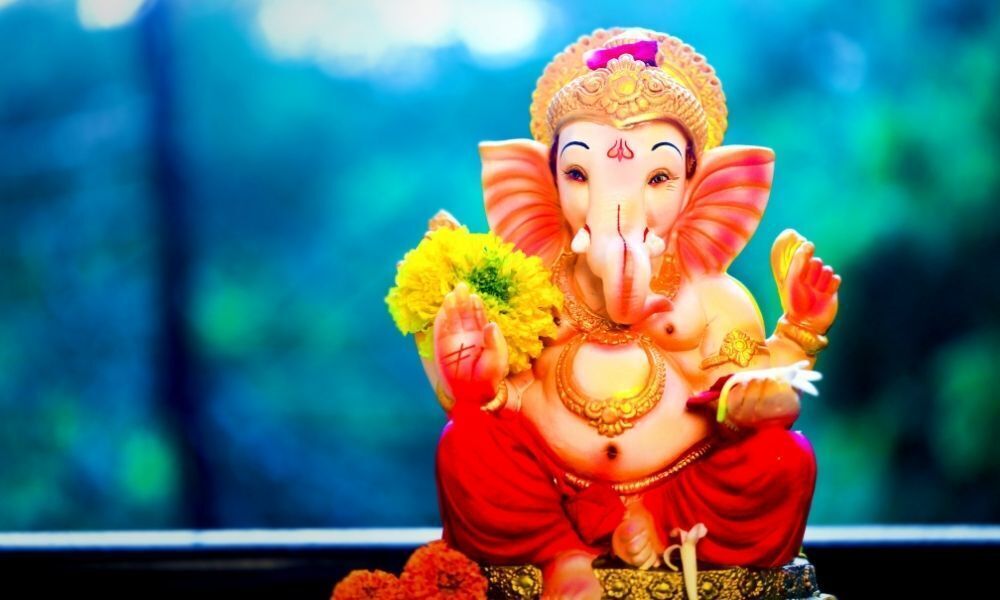
All the characteristics of the god Ganesha are considered peculiar because they have unique meanings. The most striking feature of this god is precisely his wisdom and intellect. For Ganesha everything happens exactly as it should happen, even the obstacles that are not taken out of the way.
His way of seeing fortune is not only in the material world, but also all that is acquired by life experience, whether spiritual, mental or material. That is why it is fundamental for him to deal with the good and the bad in life, and that sacrifices often need to be made in order to obtain true happiness.
Wisdom
For Ganesha, the God of Wisdom, all this knowledge and deepening of learning is what makes evolution and enlightenment increasingly closer and more possible for people, because for him, every trajectory has two sides, the good and the bad, and both have lessons to be acquired.
A person with wisdom is one who is not attached to the material possessions of worldly life, but who finds a balance between the spiritual and the material, besides going through all the disagreements of life with much hope and thirst for learning, and this is exactly what Ganesha expects from his devotees.
It cleanses, removes and untangles obstacles when it is necessary to act in that way, but true wisdom comes from understanding that it is not always necessary to clean, but often it is necessary to go through things exactly as they are and are.
Fortune
Ganesha's fortune can come in many forms. Among them, it can come in the form of teachings and knowledge. Nothing Ganesha does is by chance. Even though he is well known for removing obstacles, he believes that there are obstacles that are needed to be passed, as they are of great importance for enlightenment.
Spiritual evolution is extremely important to this god. For him, we need to go in search not only of the material goods that surround us, but also of a lot of internal wisdom. The person who is aware of this is full of fortune in his life.
Obstacle Remover
The best known symbolism of this god is to remove obstacles so that there may be a full life. Ganesha, in fact, removes everything that needs to be removed and that does not serve the evolution of human beings on the path. However, he does not only do this.
What many people do not know is that there are beliefs that say that Ganesha also puts obstacles in the way, because that is how people evolve and find the way to the light and to the greater spirituality, that is, having the consciousness of overcoming in going through these obstacles and not just asking for them to be removed from the way.
Types of mandala material
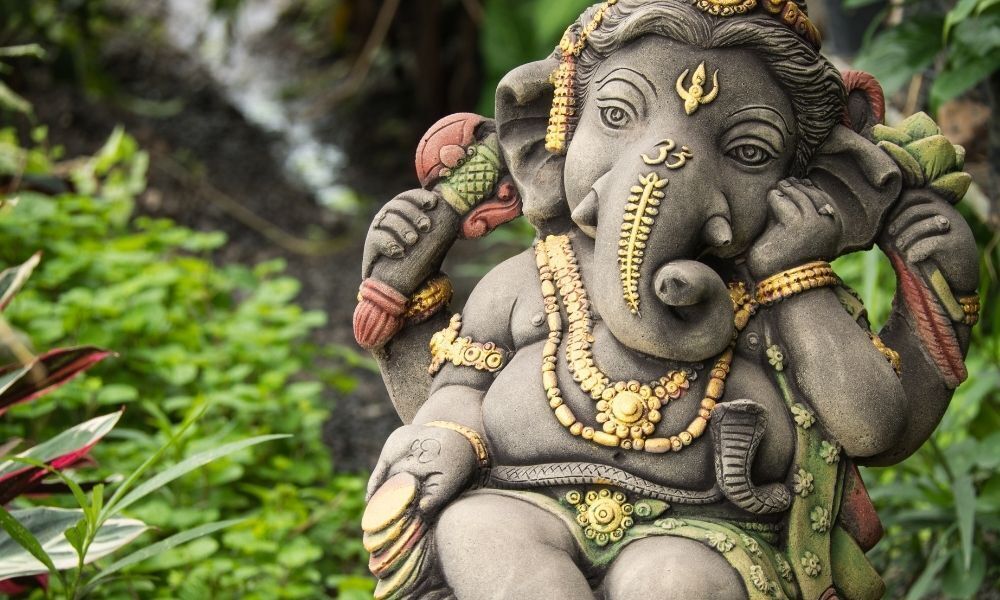
There are many ways to be a devotee of the god Ganesha and have him present in various moments of everyday life. It is not necessary to have his image somewhere for him to be remembered, contacted and called.
It is possible to have a greater contact with the god through mantras and through the human body itself, since Ganesha acts in the Heart Chakra, to seek wisdom, fortune, knowledge and intellectual intelligence, besides Ganesha's great generosity.
Ganesha Mantra
Ganesha's mantra is one of the best known and used by the Hindu culture. It is possible to search all the symbols and meanings of this god by this mantra. The mantra is: Om Gam Ganapataye Namah, of Hindu origin that has as its meaning "I salute you, Lord of the Troops".
It is composed of "OM" which is the invocation and primordial connection with him, besides "Gam" which means to move, to approach, i.e., to meet Ganesha, the word "Ganapati" which symbolizes the Lord himself, and Namah which is worship.
Ganesha Chakra
Because Ganesha is the god of wisdom, intelligence and learning he is said to be in the first Chakra, the Muladhara, better known as the Solar Plexus Chakra which is located on the top of the head of each and every human being.
It is exactly in this Chakra that the divine force manifests, and that is why Ganesha has his permanence, because that is how he commands the forces that act in people's lives, giving exact directions to them.
How does the god Ganesha manifest in Western culture?
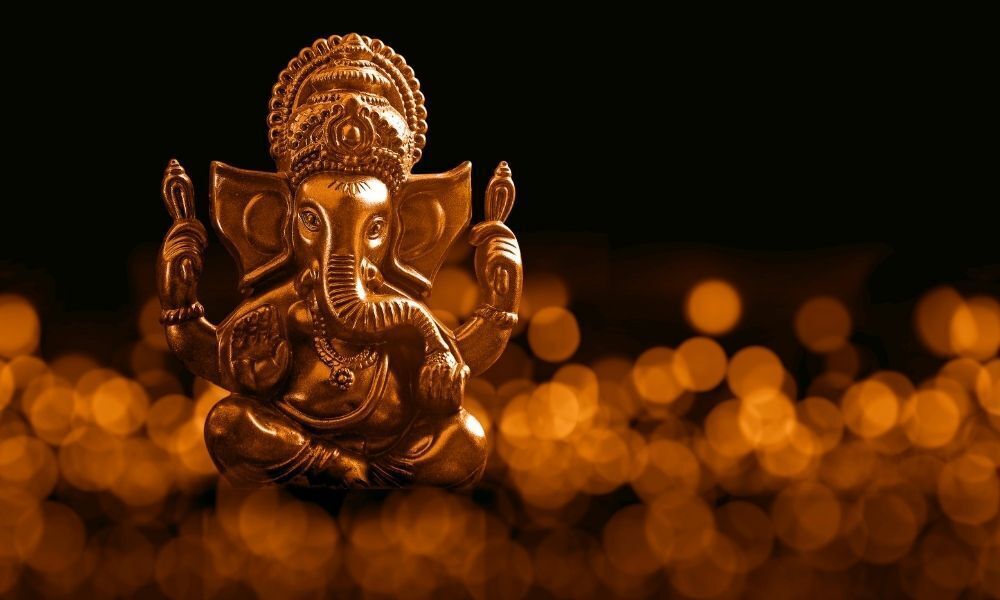
In the East, the god Ganesha is one of the most important and worshiped, having for himself extremely important festivals and commemorative dates. In the West these rituals are not so frequent, however, this does not mean that the god is not worshipped.
His symbolism and meaning for the Western culture is the same as for the Eastern culture, but for the West it is more common that the devotees of Ganesha look for him for things related to fortune and not always to spiritual fortune. It is not surprising to have images of this god in houses as a symbol of good luck, good events and to bring money.

